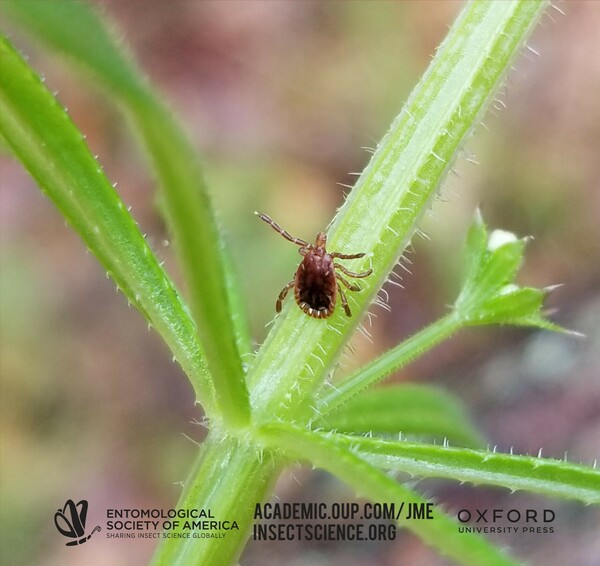
Abstract
Data on the prevalence and distribution of ticks and tick-borne diseases in Belize are lacking. Ticks (n = 564) collected from dogs, horses, and vegetation in two villages in Stann Creek District in southeastern Belize in 2018, were molecularly identified and screened for tick-borne nonviral human pathogens. The identity of 417 ticks was molecularly confirmed by DNA barcoding as Rhipicephalus sanguineus (Latreille) (66.43%), Amblyomma ovale Koch (15.59%), Dermacentor nitens Neumann (11.51%), Amblyomma sp. ADB0528 (3.6%), and the remainder being small records (2.87%) of Amblyomma coelebs Neumann, Amblyomma imitator Kohls, Amblyomma tapirellum Dunn, Amblyomma auricularium Conil, and Amblyomma maculatum Koch. Individual tick extracts were screened for the presence of Rickettsia spp., Babesia spp., Babesia microti, Borrelia spp., Ehrlichia spp., and Anaplasma spp. using available conventional polymerase chain reaction (PCR) assays. Rickettsia parkeri strain Atlantic Rainforest was identified in five specimens of A. ovale, and one other unidentified tick, all collected from dogs. Another unidentified tick—also collected from a dog—tested positive for an undefined but previously detected Ehrlichia sp. With the exception of D. nitens, all eight other tick species identified in this study were collected on dogs, suggesting that dogs could be usefully employed as sentinel animals for tick surveillance in Belize.
Link to full article: https://doi.org/10.1093/jme/tjac112